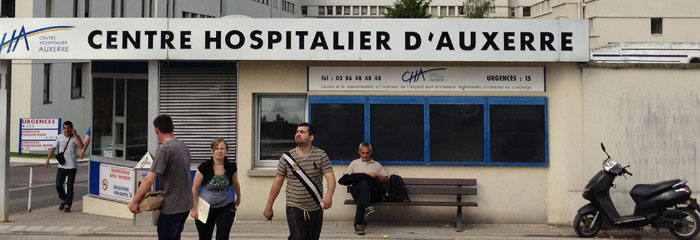
Identifying geographic differences and drivers
Key to developing products for global use is the identification of geographic differences and drivers. Differences in behaviors, expectations, and ideals often inform unique market needs, while the impetuses driving these differences (e.g. cultural norms/ trends, regulatory bodies, environmental conditions, current competitive market, distribution channels, etc.) allow us to appropriately plan for, and to some extent predict, the impact these variances will have on new offerings.
 As a brief example, during a recent medical innovation program we learned that current surgical technique varied significantly between the US and Europe. Specifically, surgeons in the US were using sutures (known to contribute towards long-term patient pain) in instances where European surgeons were not (and had no desire to). In digging deeper on the driver behind this variance, it became apparent that US surgeons generally recognized that the use of sutures was unnecessary, however they were willing to take this additional step as a means of “insurance” to avoid any potential liability. While clinically unfounded, the litigation-focused climate of the US had precluded surgeons from adopting (or trusting) newer technologies intended to replace sutures. This understanding lead us to explore new, less invasive and more efficient ways to provide “insurance” for the US market, while also significantly influencing the positioning and go to market strategy for new products that leveraged suture alternatives.
As a brief example, during a recent medical innovation program we learned that current surgical technique varied significantly between the US and Europe. Specifically, surgeons in the US were using sutures (known to contribute towards long-term patient pain) in instances where European surgeons were not (and had no desire to). In digging deeper on the driver behind this variance, it became apparent that US surgeons generally recognized that the use of sutures was unnecessary, however they were willing to take this additional step as a means of “insurance” to avoid any potential liability. While clinically unfounded, the litigation-focused climate of the US had precluded surgeons from adopting (or trusting) newer technologies intended to replace sutures. This understanding lead us to explore new, less invasive and more efficient ways to provide “insurance” for the US market, while also significantly influencing the positioning and go to market strategy for new products that leveraged suture alternatives.
Immerse yourself! The importance of in-context research
In order to identify these differences and drivers, qualitative research (applied ethnography, online longitudinal studies, and interviewing) within the everyday context of use is paramount. This approach enables the team to best understand the distinct attributes of a market without assumptions or best guesses. By immersing ourselves in the environment and culture, we can fully understand (and observe) the differences and drivers that make any given market unique.
Considerations: coverage & timing
While we advocate for full immersion into the cultural context, we recognize that it’s not always pragmatic (or necessary) to do so in every existing or potential market throughout each stage of development.  As such, there are two key considerations that will help optimize efficiencies while maintaining efficacy: coverage and timing. When evaluating geographical coverage, it’s important to align your research targets with strategic plans (what markets are you looking to enter/ expand?), as well as existing market knowledge (is there reason to believe that this market is unique?). This will help prioritize targets, and in turn help determine qualitative methodologies (e.g. contextual data shared online i.e. video, photo diaries, etc. might be appropriate for lower priority markets, with less impact on timeline and budget).
As such, there are two key considerations that will help optimize efficiencies while maintaining efficacy: coverage and timing. When evaluating geographical coverage, it’s important to align your research targets with strategic plans (what markets are you looking to enter/ expand?), as well as existing market knowledge (is there reason to believe that this market is unique?). This will help prioritize targets, and in turn help determine qualitative methodologies (e.g. contextual data shared online i.e. video, photo diaries, etc. might be appropriate for lower priority markets, with less impact on timeline and budget).
In addition to coverage, timing (as it relates to the innovation process) is a key consideration when developing your plan for global research. Generally, exposure to multiple markets is better leveraged sooner than later. Because geographic/ cultural differences and drivers impact planning, it is best to learn them (and account for them) early in the innovation process, as a means to mitigate risk associated with assumptions. This early understanding of varying markets will also help shape (and often focus) iterative research touchpoints, as we can make informed decisions on market targets/ coverage for all follow-on activities.
Recognize that a “one size fits all” approach is not always appropriate
Lastly, when developing products for global use, it is important to recognize that a ‘one size fits all’ approach might not be appropriate (this tends to be particularly true for emerging markets). The identified differences and drivers must be weighed in order to determine whether or not a single offering (or platform) can effectively meet the often disparate market needs. In some instances, an attempt to strike a balance across (conflicting) market needs results in a product that is lackluster, with the perceived value compromised across some or all markets.
To reference the earlier cited medical example, the decision was made to treat the additional surgical “insurance” as a platform add-on intended to target the US market specifically, as integrating such a feature into the product would significantly compromise the overall value from the European perspective.

